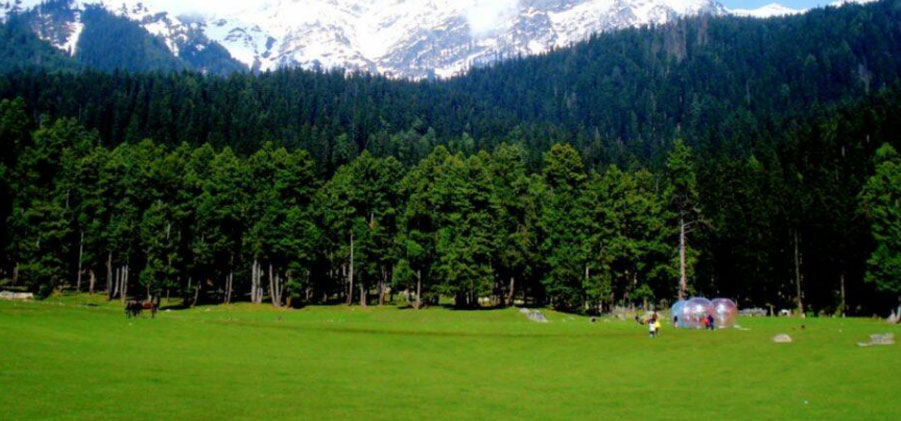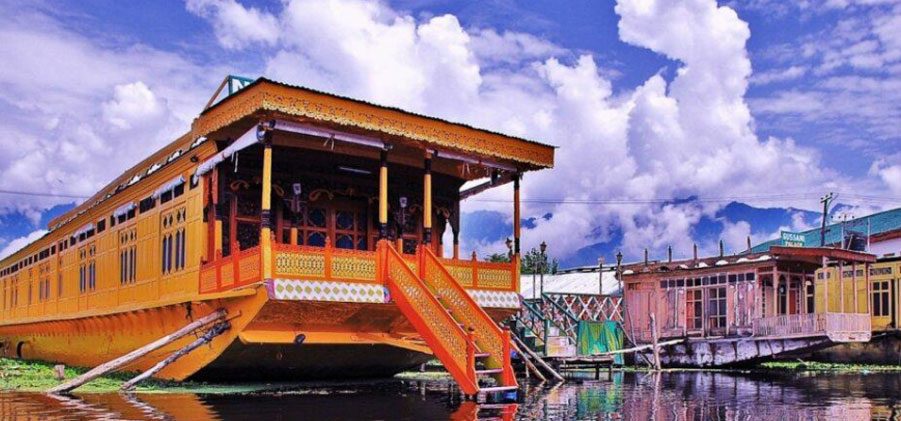
Pahalgam Tourism
The Lidder river runs through Pahalgam in a rushing gray-green torrent, foam flecked, breaking in curling waves against the boulders that lie in its path. Its sound is an eternal as the whisper of wind through pine and fir, its force primeval its untamed splendor.
Long before this little village 96 Km east from Srinagar 2400 meters above sea level, became the popular holiday resort it is today, it was the preserve of nomadic shepherds. Its rugged charm has remained un-spoilt by progress, while a bustling main street and its wide range of tented camps, hotels and lodges have established it as a favorite holiday resort.
Pahalgam spreads along the banks of the Lidder, which is the focal point of interest to the angler.
The trout fisherman delight, the Lidder is divided into three fishing beats between Mattan and Phalgham, and the trout are so thick that even the first time fisherman can land a good catch. Pahalgam is perhaps best known as the take off point for trek into the surrounding mountains. The resort is well geared to meet the demands at onward going trekkers and camping equipments is readily available, as are ponies and porters. Walking the Lidder valley is scenically most rewarding, through forests of virgin pine, fording crystal clear mountains streams and through meadows of wild flowers, higher up the valley.
Popular treks from Pahalgam are to the Kolohao Glacier Via Aru, Satlanjan and Dudsar Lake, and to the high altitude lakes, that dot the meadowland and mountain ridges between Pahalgam and Sonmargh.
Cottages in a tourist village, a full fledged club and a large number hotels have come up this beautiful resort pilgrimage to a cave of an ‘ice-lingam’
There is something about the pure and re-vitalizing air of Pahalgam. Perhaps dense pine and cedar forests make it oxygen rich. Limited accessibility combined with limited telecom connectivity make it an ideal getaway from the grind of daily life and professional stress.
The town is at the junction of the Aru and Sheshnag Rivers and surrounded by soaring, fir-covered mountains with bare, snow-capped peaks rising behind them. The Aru flows down from the Kolahoi glacier beyond Lidderwat while the Sheshnag from glaciers along the great Himalayas.
Apart from adventures, Pahalgam is the starting point of the annual Amarnath yatra (holy journey) to the holy cave shrine of Amarnath, which is said to be the abode of Lord Shiva. Every year in the month of July/August, thousands of pilgrims descend on Pahalgam on their way to the holy cave .
Gulmarg’s astounding beauty, prime location and closeness to Srinagar naturally make it one of the prime hill stations in the country. Originally called ‘Gaurimarg’ by shepherds, its present name was given in the 16th century by Sultan Yusuf Shah, who was impressed by the sight of its green slopes embellished with wild flowers. Today, Gulmarg is not only a mountain resort of exemplary beauty – it also has the highest green golf course in the world, at an altitude of 2,650 m, and is the country’s major ski resort in the winter.
Tourist Attractions in Pahalgam
Chandanwari
Situated at 2,895 m and 16 km (10 miles) from Pahalgam, is the starting point of the Amamath yatra. The road from Pahalgam to Chandanwari is curvy, sometimes a relatively flat terrain, with quite a few steep curves. It can be undertaken by car (not busses and trucks for most part) with some skilled driving. From Chandanwari onwards the track becomes much steeper, being accessible on foot or by pony only. 11 km from Chandanwari is the mountain lake of Sheshnag, after which, 13 km away is the last stop, Panchtarni. A narrow spiralling path from Panchtarni leads to the Amarnath Cave.
Baisaran
Pine forests dot this meadow which presents a picturesque view of the snow-clad mountains. The snow covered Tulian lake at an altitude of 3353 m is 11kms from Baisaran.
Sheshnag Lake
The waters of this greenish blue lake are covered with ice till June. Sheshnag lies at a distance of 13 km from Chandanwari and is at 11,330 ft above sea level. The place has derived its name from seven peaks that look like the head of Sheshnag, the sacred snake in the Hindu mythology. Panchtarni It is the confluence of five streams and gives
Panchtarni
Its name. For those headed towards the holy cave of Amarnath, Panchtarni is the last camping site. From Panchtarni, Amarnath is located at a distance of 6 km.
Amarnath Cave
Pahalgam is the base for the religious trek to the abode of Lord Shiva. A narrow spiralling path from Panchtarni leads to the Amarnath Cave. The massive ice shivlingam is visited by thousands of pilgrims between July and September.
Aru
This charming meadow can be reached by walking along a mountain path. The river Lidder disappears at Gur Khumb and reappears after 27 mts.
Lidderwat
A beautiful camping site set among dense forests. Starting point of the trek to the Sindh Valley.
Activities in Pahalgam
Pahalgam has lots of recreational activities especially trekking adventures. It offers wonderful treks, skiing, mountaineering and camping sites. Trekking can be undertaken to Kolahoi Glacier which is very beautiful via Aru village. Sledging at the frozen Glaciers is also offered by locals. You can take long walks in the jungles and explore rich flora and fauna. Pahalgam is the main base camp to Amarnath Cave. Alpine Skiing is also available at high altitudes. A Popular trek from Sonamarg to Pahalgam and trek to Chandanwari and Sheshnag lake can also be undertaken. The Liddar River is popular among travelers interested in angling. Stretches of this river are suitable for trout fishing. Pahalgam has a golf course at 2400 meters above the sea level. Camping equipment, ponies and skiing equipment is readily available.


